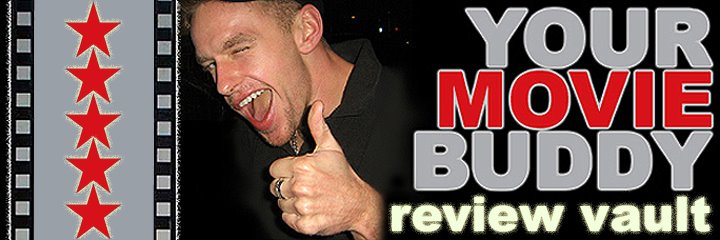4 stars (out of 5)
by R. Kurt Osenlund
If you go to see the new apocalyptic thriller Cloverfield, be sure to find your footing before you get up to leave the theater. The film – born from the mind of "Lost" creator J.J. Abrams - has been described as The Blair Witch Project meets Godzilla, because it uses do-it-yourself technology to depict a towering lizard-monster’s attack on New York City. When Blair Witch hit theaters back in 1999, audience members complained of suffering motion sickness due to the indie hit’s shaky camera. Well, in Cloverfield, not only does the camera shake, but the ground shakes as well, creating a double dose of dizzying, nausea-inducing cinema. However, that is in no way a criticism of the movie.
Conceptually, Cloverfield (the name given by the government to the found footage that we’re meant to believe was edited together into what we see on screen) is wonderfully innovative, and I’d go as far as to call it a landmark in moviemaking history. The Blair Witch Project was as well, but mainly for reasons of profit. It had a shoestring budget and a genius marketing campaign, then went on to make millions at the box office, which was unprecedented for a film of its type. Yet what Blair Witch showed (or didn’t show) on screen was nothing spectacular. The groundbreaking thing about Cloverfield is that it presents elite, big budget special effects through the lens of a handheld camera, in the hopes of creating a heightened sense of realism for the YouTube generation. It works and it doesn’t.

The events in the story begin as a group of friends, played by a group of relatively unknown actors (including Mike Vogel of Grind), throw a going away party in a downtown Manhattan apartment for the Japan-bound Rob (Michael Stahl-David) and document the festivities on DV. Rob’s brother Jason (Vogel) is in attendance, along with Jason’s girlfriend Beth (Odette Yustman), Beth’s cynical friend Marlena (Mean Girls' Lizzy Caplan), and Lily (Jessica Lucas), Rob’s gorgeous object of desire. Most of the actors are good enough and the film smart enough to successfully misdirect early on, ensnaring us for a short while in the juicy gossip of the group’s inner circle. By the time things start rumbling and blowing up, we’re already knee-deep in a good episode of primetime TV, and the reminder of what kind of movie we came to see is a jolt comparable to the one felt by the characters. Panic erupts at the party, and when a guest points the blame to another terrorist attack, the film achieves a relevance that no contemporary song ever could. No one knows what’s going on, and neither do we, but when the shocking image of the Statue of Liberty’s mangled head rolling down the street comes into view, it’s clear that something is very, very wrong.
Like Independence Day, or the dreadful yet eye-popping The Day After Tomorrow, Cloverfield benefits simply from the shock factor alone. Seeing New York City buildings crumble (or freeze, or burn), will never cease to amaze American audiences; and in a post-9/11 world, it now resonates too. And like The Poseidon Adventure or its dreadful yet eye-popping 2006 remake, Cloverfield also benefits from the primal depths movies like this can reach. Disaster flicks tap into the human condition in a way few other genres can: the action becomes less about singular, selfish motives, and more about a chosen group’s collective, natural instinct to survive. They often make for good character development as well, for what better measure is there of a person’s character than the way he or she behaves in desperate moments of pressure and devastation? The characters here are no heroes, but we believe them, and the film wisely doesn’t spend too much time showing them trying to figure out the origins of the 500 ft. creature demolishing the city. Possible explanations do get tossed around (“is it an alien?” “did it come from the ocean?”), but ultimately, there isn’t much time for “why?” when you’re running for your life.

The problem with films of the shaky-cam persuasion is that the audience is entirely dependent on the person operating the equipment. Unlike a full-scale production that can use cuts, pans, zooms, and multiple angles to paint a vivid picture, this type of approach offers a limited perspective. It keeps the content more grounded in reality, but it often leaves you wanting more, and there are moments in Cloverfield that are so exciting, I almost wished that such a production could just take over. And unfortunately, this cameraperson usually isn’t someone viewers would want to travel with for two hours. If you thought Heather Donahue’s whiny presence in Blair Witch was too much to handle, wait until you get a load of Hud, the obligatory awkward best friend who’s given the job of director in the beginning so that all of the more beautiful actors can be photographed. He’s played by curly-haired newcomer T.J. Miller, and let’s just say that Miller’s annoyingly poor acting (which is obviously, primarily aural) is the lowlight of the film.
The highlight is the fact that Abrams managed to pack a thrilling summer blockbuster not only into a lackluster January schedule, but also into the confines of a handheld digital camera frame. Cloverfield has its missteps, but many are forgiven by the fact that it’s a fresh and unmatched take on the monster picture, one that your eyes (and your stomach) won’t soon forget.


No comments:
Post a Comment